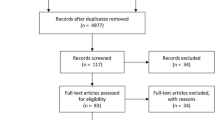Abstract
Background
Ten to 40% of children operated on for a posterior fossa tumour require a further surgical procedure for the management of a persisting active ventricular dilation. The management of this kind of hydrocephalus is still controversial.
Objective
To prospectively evaluate the effectiveness of post-operative endoscopic third ventriculostomy (ETV) in the management of persistent active hydrocephalus in a series of children operated on for a posterior cranial fossa tumour.
Methods
The management protocol consisted of: (1) placement of a peri-operative antibiotic impregnated external ventricular catheter (Bactiseal®) and tumour removal, (2) post-operative intracranial pressure (ICP) monitoring through the external ventricular drainage, (3) ETV in case of persistent ventricular dilation and persistently abnormal high ICP values and (4) ventriculoperitoneal shunt implantation in case of ETV failure.
Results
Thirty on a total of 104 children (28.8%) operated on between January 2001 and February 2007 at our institution needed a further surgical treatment for the persistence of the hydrocephalus after the removal of their posterior cranial fossa tumour. They were sub-divided in two groups according to the early (group 1—21 patients) or later (group 2—nine patients) definition of the persistence of an active ventricular dilation based on clinical, radiological and ICP monitoring data. ETV was successful in 90.0% of the patients in the present series (27/30 patients), without statistically significant differences among the two groups considered.
Conclusions
Post-operative ETV should be considered the best option to treat persistent hydrocephalus after the removal of posterior fossa tumours.


Similar content being viewed by others
References
Dias MS, Albright AL (1989) Management of hydrocephalus complicating childhood posterior fossa tumors. Pediatr Neurosci 15:283–290
Gnanalingham KK, Lafuente J, Thompson D, Harkness W, Hayward R (2003) The natural history of ventriculomegaly and tonsillar herniation in children with posterior fossa tumours—an MRI study. Pediatr Neurosurg 39:246–253
Chumas P, Sainte-Rose C, Cinalli G (1995) III ventriculostomy in the management of posterior fossa tumors in children. Child’s Nerv Syst 11:540 Santiago, Chile, 26–29 September 1995
Ruggiero C, Cinalli G, Spennato P, Aliberti F, Cianciulli E, Trischitta V, Maggi G (2004) Endoscopic third ventriculostomy in the treatment of hydrocephalus in posterior fossa tumors in children. Child’s Nerv Syst 20:828–833
Sainte-Rose C, Cinalli G, Roux FE (2001) Management of hydrocephalus in pediatric patients with posterior fossa tumors: the role of endoscopic third ventriculostomy. J Neurosurg 95:791–797
Fritsch MJ, Doerner L, Kienke S, Mehdorn HM (2005) Hydrocephalus in children with posterior fossa tumors: role of endoscopic third ventriculostomy. J Neurosurg (Suppl) 103:40–42
Bognar L, Borgulya G, Benke P, Madarassy G (2003) Analysis of CSF shunting procedure requirement in children with posterior fossa tumors. Child’s Nerv Syst 19:332–336
Taylor WAS, Todd NV, Leighton SEJ (1992) CSF drainage in patients with posterior fossa tumours. Acta Neurochir (Wien) 117:1–6
Lee M, Wisoff JH, Abbott R (1994) Management of hydrocephalus in children with medulloblastoma: prognostic factors for shunting. Pediatr Neurosurg 20:240–247
Due-Tonnessen BJ, Helseth E (2007) Management of hydrocephalus in children with posterior fossa tumors: role of tumor surgery. Pediatr Neurosurg 43:92–96
Schijman E, Peter JC, Rekate HL, Sgouros S, Wong TT (2004) Management of hydrocephalus in posterior fossa tumors: how, what, when? Child’s Nerv Syst 20:192–194
Tamburrini G, Di Rocco C, Caldarelli M, Di Rocco F, Sabatino G, Koutzoglou M (2003) Postoperative third ventriculostomy in children with posterior cranial fossa tumors. Child’s Nerv Syst 19:691–692
Santos de Oliveira R, Barros Jucà C, Valera ET, Machado HR (2008) Hydrocephalus in posterior fossa tumors in children. Are there factors that determine a need for permanent cerebrospinal fluid diversion? Child’s Nerv Syst doi:10.1007/s00381-008-0649-x
Culley DJ, Berger MS, Shaw D (1994) An analysis of factors determining the need for ventriculoperitoneal shunts after posterior fossa tumor surgery in children. Neurosurgery 34:402–408
Papo I, Caruselli G, Luongo A (1982) External ventricular drainage in the management of posterior fossa tumors in children and adolescents. Neurosurgery 10:13–15
Di Rocco C, Massimi L, Tamburrini G (2006) Shunts vs endoscopic third ventriculostomy in infants: are there different types and\or rates of complications. Child’s Nerv Syst 22:1573–1589
Jones RF, Stening WA, Brydon M (1990) Endoscopic third ventriculostomy. Neurosurgery 26:86–91
Morelli D, Pirotte B, Lubansu A, Detemmerman D, Aeby A, Fricx C, Berrè J, David P, Brotchi J (2005) Persistent hydrocephalus after early surgical management of posterior fossa tumors in children: is routine preoperative endoscopic third ventriculostomy justified? J Neurosurg (Suppl) 103:247–252
Acknowledgment
This study was supported by the Association “Ali di scorta”, www.alidiscorta.it.
Author information
Authors and Affiliations
Corresponding author
Rights and permissions
About this article
Cite this article
Tamburrini, G., Pettorini, B.L., Massimi, L. et al. Endoscopic third ventriculostomy: the best option in the treatment of persistent hydrocephalus after posterior cranial fossa tumour removal?. Childs Nerv Syst 24, 1405–1412 (2008). https://doi.org/10.1007/s00381-008-0699-0
Received:
Published:
Issue Date:
DOI: https://doi.org/10.1007/s00381-008-0699-0




